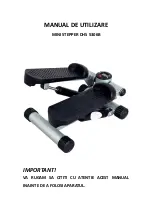
– 48 –
WARNING :
Turn OFF the power before starting the work so as to prevent accidents caused by abrupt start of the sewing machine.
Trouble
Cause (1)
Cause (2)
Checking order and adjusting procedure
5. Overlocking needle thread
stitches are skipped.
The lower looper fails to catch
needle thread loops. (Stitch
skipping of lower side)
Right
side
Wrong
side
5-1)
Lower looper
1-A)
The blade point has defective shape
and does not catch needle thread loops.
Replace the lower looper.
5-2)
Adjustment of the
loopers.
2-A)
The clearance or the returning amount
is not correct.
Refer to the pertinent Standard Adjustment.
5-3)
Needle thread
presser
3-A)
The duration in which the presser holds
the needle thread is not correct, and un-
stable loop result.
Replace the lower looper with badly deformed
blade point.
5-4)
Needle
4-A)
The needle is bent or improperly orient-
ed. A needle or DC×1 is used.
Replace the bent needle. Correctly orient and
attach the needle. Use a DC×27 needle. Use a
DC×J27 needle for a stretchy thread.
5-5)
Needle guards
5-A)
Incorrect height or clearance prohibits
correct guide for the needle. If a needle
guard is too high, loops are crushed
with consequent stitch skipping.
Refer to the pertinent Standard Adjustment.
5-6)
Height of needle
6-A)
The needle has incorrect height and
does not properly pick up loops even
if the looper has a correct returning
amount .
Refer to the pertinent Standard Adjustment.
5-7)
Needle heat
7-A)
Stitch skipping occurs before the thread
breaks due to needle heat.
Refer to the clause relating to "1. Needle thread
breakage" due to needle heat.
5-8)
Positioning of the
needle thread guide
8-A)
They are positioned too high, and the
needle thread take-up takes too much
thread, producing too small loops.
Refer to the pertinent Standard Adjustment.
5-9)
Threading
9-A)
The thread has been entangled with a
thread guide. Threading has not been
done correctly.
Refer to the threading diagram.













































